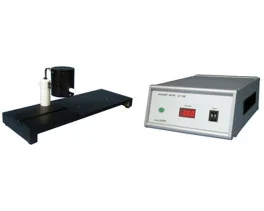Authors
A Bourgeois, I Lauritzen, T Lorivel, C Bauer, F Checler, R Pardossi-Piquard
Lab
Université Côte d’Azur, INSERM, CNRS, IPMC, UMR7275, Sophia-Antipolis, Valbonne, France
Journal
Neurobiology of Aging
Abstract
The triple transgenic mouse model (3_TgAD: APPswe, TauP301L, PS1M146V) recapitulates both amyloid _ (Abeta)- and tau-related lesions as well as synaptic and memory deficits. In these mice, we reported an early apathy-like behavior and alterations in synaptic plasticity appearing concomitantly with intraneuronal accumulation of C99 in the subiculum. To delineate the genuine contribution of C99 on the above phenotypes, we generated double transgenic mice (2_TgAD: APPswe, TauP301L) that accumulate C99 without Abeta deposition or hyperphosphorylation of tau and compared them to 3_TgAD mice. Here, we show that both TgAD mice display similar decreases in long-term potentiation and in spontaneous locomotor activity measured by actimetry suggesting that the synaptic alterations and the apathy-like behavior were likely linked to C99 rather than Abeta. However, spatial learning alterations, assessed by the Morris water maze task, are more pronounced in 3_TgAD than in 2_TgAD, suggesting that both Abeta and C99 contribute to defects in the acquisition of spatial information. Finally, even if similar results are observed in males, cognitive and non-cognitive deficits are more severe in females.
BIOSEB Instruments Used:
Aron Test or Four Plates Test (LE830),Rotarod (BX-ROD)

 Douleur - Allodynie/Hyperalgésie Thermique
Douleur - Allodynie/Hyperalgésie Thermique Douleur - Spontanée - Déficit de Posture
Douleur - Spontanée - Déficit de Posture Douleur - Allodynie/Hyperalgésie Mécanique
Douleur - Allodynie/Hyperalgésie Mécanique Apprentissage/Mémoire - Attention - Addiction
Apprentissage/Mémoire - Attention - Addiction Physiologie & Recherche Respiratoire
Physiologie & Recherche Respiratoire




































 Douleur
Douleur Système Nerveux Central (SNC)
Système Nerveux Central (SNC)  Neurodégénérescence
Neurodégénérescence Système sensoriel
Système sensoriel Système moteur
Système moteur Troubles de l'humeur
Troubles de l'humeur Autres pathologies
Autres pathologies Système musculaire
Système musculaire Articulations
Articulations Métabolisme
Métabolisme Thématiques transversales
Thématiques transversales Congrès & Meetings
Congrès & Meetings 